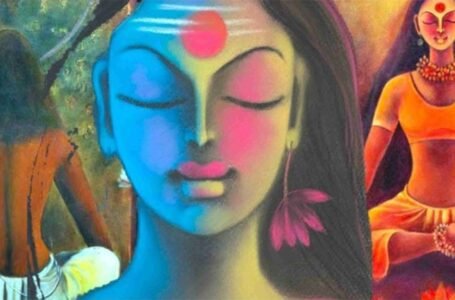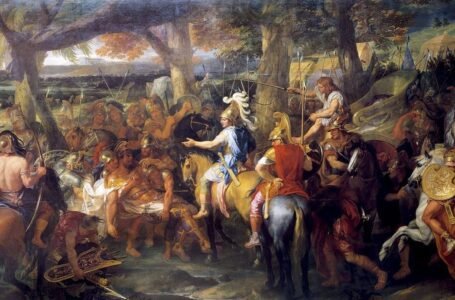Brihannaradiya Purana: Your Guide to a Better Life
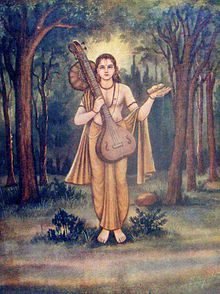
This is one of the lesser-known puranas within the corpus of Hindu literature; still, the Brihannaradiya Purana represents a very important treasury of spiritual wisdom and cultural history. This paper will delve deep into the intricate tapestry that is the Purana to trace its origins, mythological narratives, and philosophical teachings and the resounding legacy that has been bequeathed to later times.

One of the Upapurāṇas with special status within the Hindu scriptural tradition is the Brihannaradiya Purana. Its actual origin remains veiled in the mists of time, but traditionally, it has been attributed to the great sage Narada, one of the most respected rishis within Hindu mythology. Composed probably sometime between the 8th and 11th centuries CE, it was an important period of religious and cultural developments for India.
The legend goes that it was the great sage Narada, who was a great wiseman and a storyteller of Lord Vishnu, who himself compiled this Purana to explain dharma and bhakti more elaborately. Thus, like all other Puranas, it too intends to discuss and spread spiritual knowledge and moral values for people across all sections.
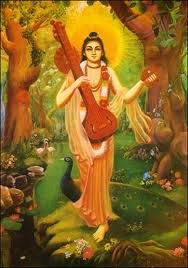
Mythology
The Brihannaradiya Purana is replete with very rich and sundry mythological narratives, beginning from cosmology and creation myths to gods, demons, and legendary heroes. Lord Vishnu is the centre of this text and is portrayed here in His different forms and incarnations.
It describes the creation of the universe, and how Lord Vishnu, in the form of a cosmic being, holds and preserves the cosmos. It tells the stories of his avatars, of which the stories of Rama and Krishna have become famous. It talks about dharma and how good triumphs over evil.
One of the major stories is that of Dhruva, the young prince who hiked up to unwavering devotion for Lord Vishnu’s sake. Never wavering, ultimately ending up occupying a place amongst the stars, it is an example of the power of devotion and what spiritual perseverance can bring into one’s life.
Gunas
The Gunas—Sattva, Rajas, and Tamas—are some of the essential concepts in Hindu philosophy. Brihannaradiya Purana gives deep insights into these basic attributes. It throws light on how these Gunas affect human behaviour and thought processes and gives insight into spiritual growth.
Of these Gunas, Sattva conveys the meaning of purity, wisdom, and harmony; it provides that impetus to the spirit of spiritual enlightenment and integrity in moral conduct. The Puranam enjoins the cultivation of Sattva through righteousness, devotion, and self-restraint.
Rajas means passion, ambition, and restlessness; it is the propelling factor behind all actions and all desires. Indeed, Rajas leads to great achievements, to progress, but it binds and leads to suffering if not counterbalanced by Sattva.
Tamas stands for darkness, ignorance, and lethargy, and is viewed in the text as a barricade to spiritual growth. Overcome Tamas, urges the Purana, through knowledge, devotion, and disciplined living.
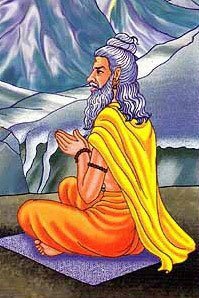
Deities
The Brihannaradiya Purana has been dedicated to a great pantheon of gods, showing the very fabric of the polytheistic tradition of Hinduism. It contains, first and foremost, Lord Vishnu, who is lauded as the highest deity and protector of the universe. Other principal gods like Brahma, the creator, and Shiva, the destroyer, have also been respected by the text to underline the cyclic formation of life.
It also has the famous description of Goddess Lakshmi, who is the wife of Vishnu and the goddess of wealth and prosperity. The Purana goes into great detail about her activities regarding the bestowal of both worldly and spiritual wealth upon her faithful devotees.
In addition to this, several regional and folk deities have been worshipped in the Purana, showing just how syncretic Hindu worship rituals are and how the most diverse forms of divinity are included within the text.
Authors
The Brihannaradiya Purana is traditionally attributed to the sage Narada. As a divine rishi and a devotee of Lord Vishnu, his role in Hindu mythology has been that of a celestial messenger and a devoted bhakta. Contributions to Hindu literature by him include much more than the purana; it includes hymns, prayers, and some philosophical discourses.
In the Purana, Narada is a complex individual, a learned sage and a mischievous troublemaker who severely tests the gods while simultaneously bringing critical messages to both gods and mortals. Therein lies a duality that underlines how rich his personality and teachings were.
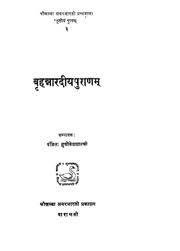
The Verses
The verses in the Brihannaradiya Purana are written in classical Sanskrit, the great literary and poetic flowering of ancient Hindu scriptures. There are several poetic meters and styles used, from the simplest couplet to the most elaborate stanza form, which makes the text versatile and always interesting as a work of literature.
It contains a number of hymns and prayers, glorifying the various gods, but more especially Lord Vishnu. All such verses are not only devotional in nature but also didactic, guiding moral conduct, spiritual practices, and pursuit of the dharma.
Worship
It is in the Brihannaradiya Purana that one finds a detailed prescription of various forms of worship and rituals, that in the final analysis, devotion is the most accessible and effective path to spiritual emancipation. It prescribes procedures for daily worship, festival worship, and special ceremonies dedicated to Lord Vishnu and other gods.
Another important mode of worship described in the Purana is the recitation of the Vishnu Sahasranama, a litany of a thousand names of Lord Vishnu; it bestows immense spiritual benefits and divine grace upon the devotee.
It also mentions that pilgrimage is an important feature of the holy places of Vishnu, foremost of which are the two sacred cities, Varanasi and Mathura, and the temples of Tirupati and Puri. These pilgrimages are acts of devotion that purify the soul and help to bring one nearer to God.
Legacy
The Brihannaradiya Purana has left an indelible mark on Hindu religious and cultural traditions. Its teaching of devotion, dharma, and the nature of the divine has continued to inspire millions of devotees. The universality of Vishnu worship that the text emphasizes integrates various regional and folk traditions into the general framework of Hinduism.
Influence of the Purana: The Purana influences religious practices, literature, art, and performance. Its stories and hymns have been adapted into many forms of classical and folk art, such as dance, music, and theatre, and as such, preserved and carried down through the ages.

Scientific Learnings
Though this is primarily a religious and philosophical text, many of its insights find their place in concepts of modern science. One example is that Puranic descriptions of cosmology and the creation of the universe share some similarities with contemporary theories on the Big Bang and cosmic evolution.
The interrelationship of all life forms, the cyclical nature of existence—the whole emphasis of the text—thus agrees with ecological and environmental movements towards harmonious relations between humans and Nature.
The Purana’s exposition on the mind, consciousness, and the Gunas presents some very important views about psychology and human behaviour which, in some way, proves that ancient wisdom can supplement and even enrich modern scientific inquiry.
Conclusion
The Brihannaradiya Purana is the living embodiment of ageless wisdom encapsulated within Hindu philosophy and spirituality. With its rich tapestry of mythological narratives, it expresses ethical teachings and devotional practices that provide an insight into the nature of the divine, the universe, and the human soul. Continuing the reading and understanding of this very ancient scripture unfolds timeless truths that inspire, guide, and enlighten humankind along the path of spirituality.
It’s not just some legacy of the past but a living one, through which the spiritual and cultural landscape of India and worldwide keeps getting shaped and enhanced. It brings us back to the power of devotion, righteousness, and the eternal quest for knowledge and enlightenment.
